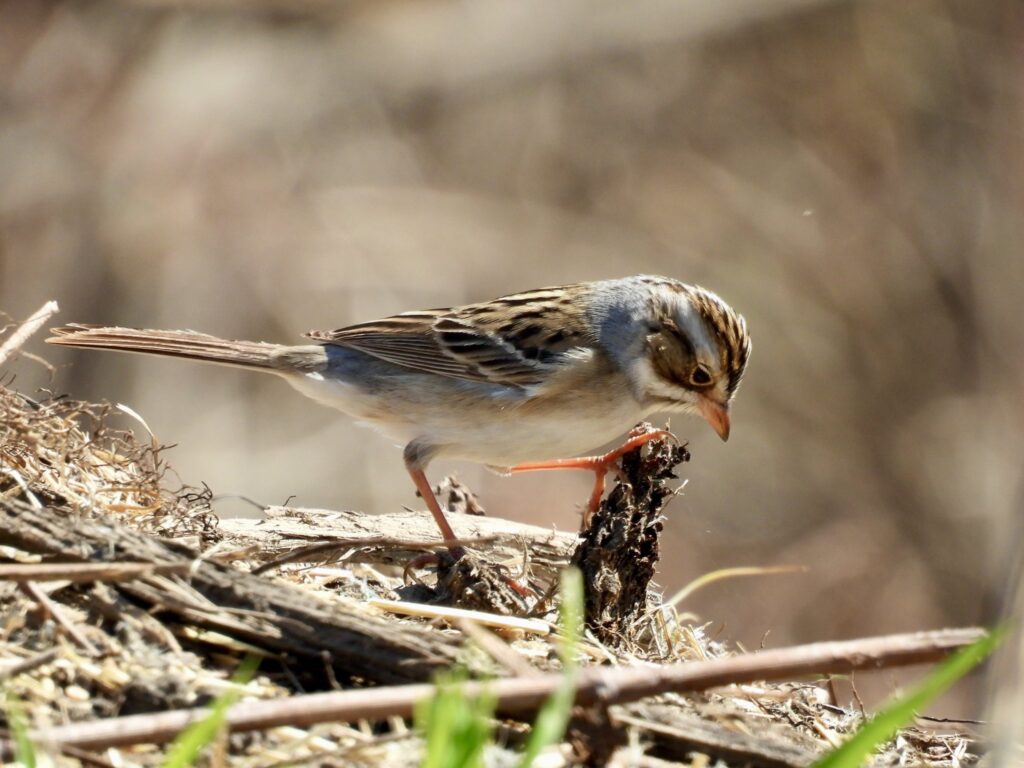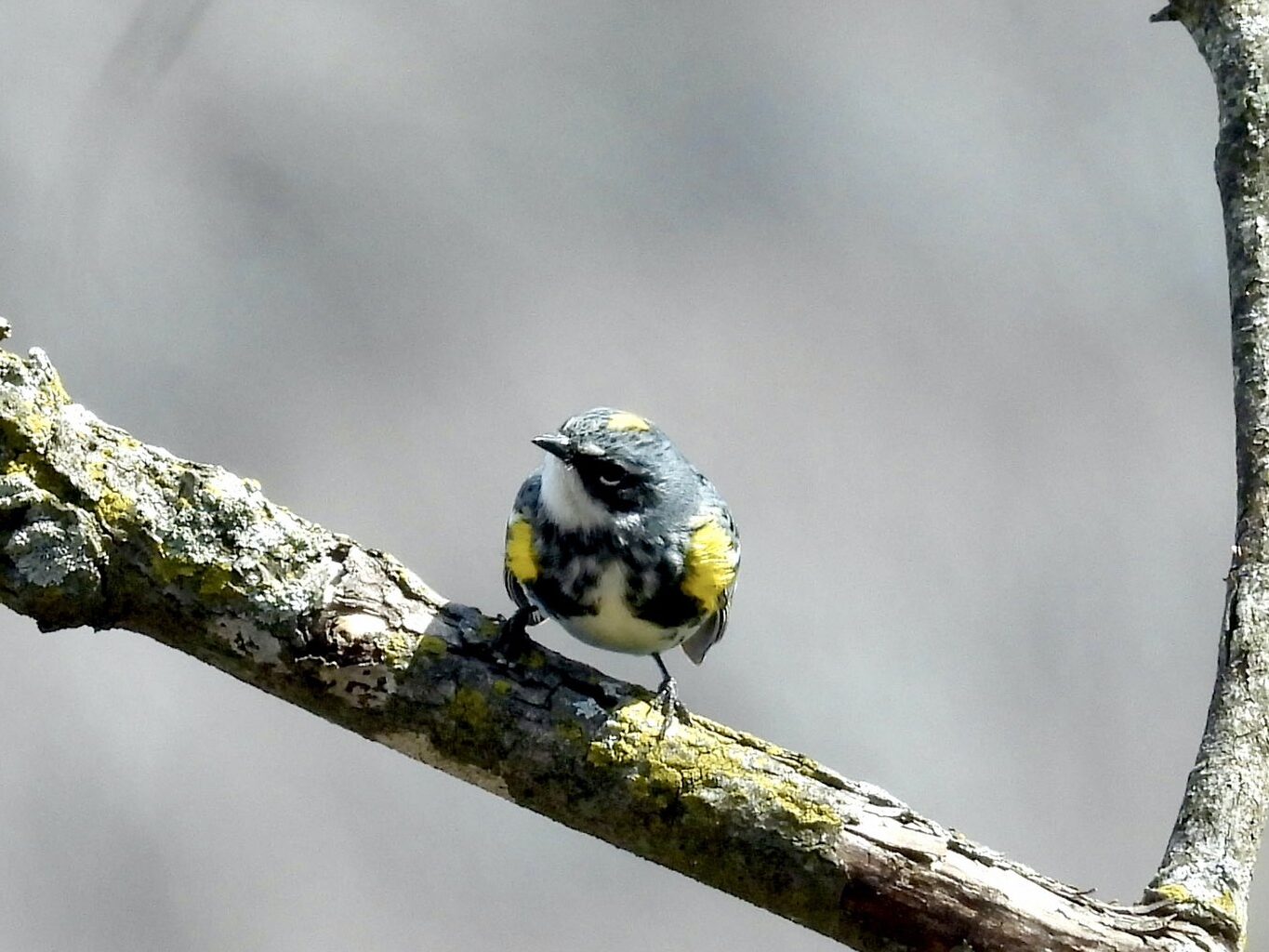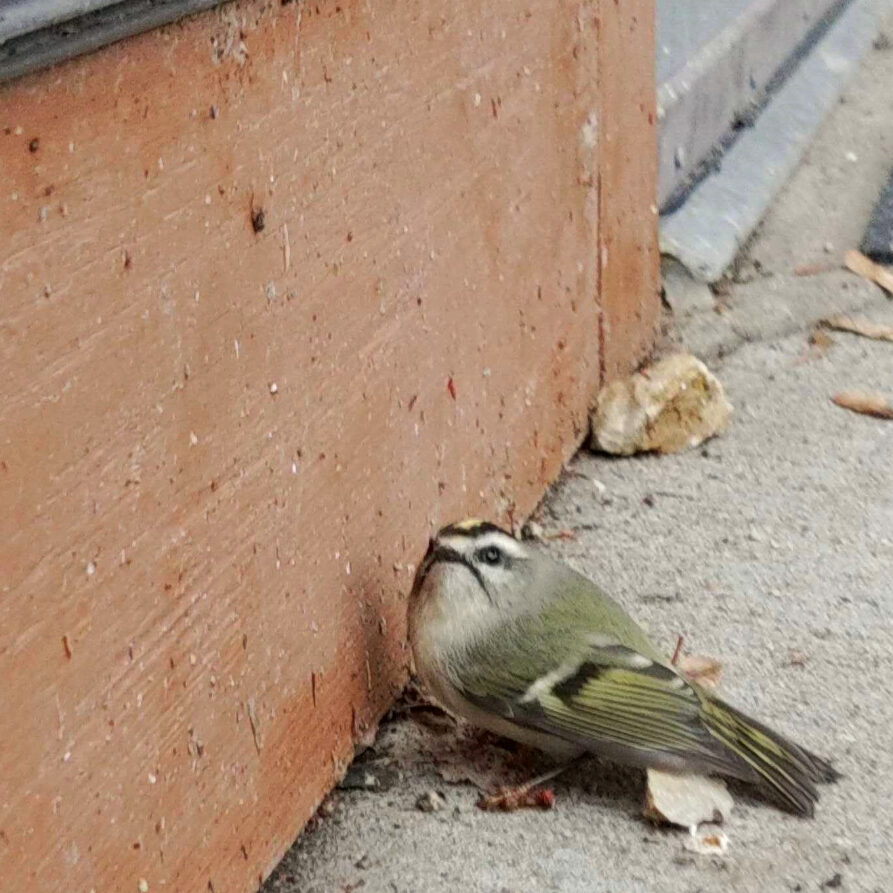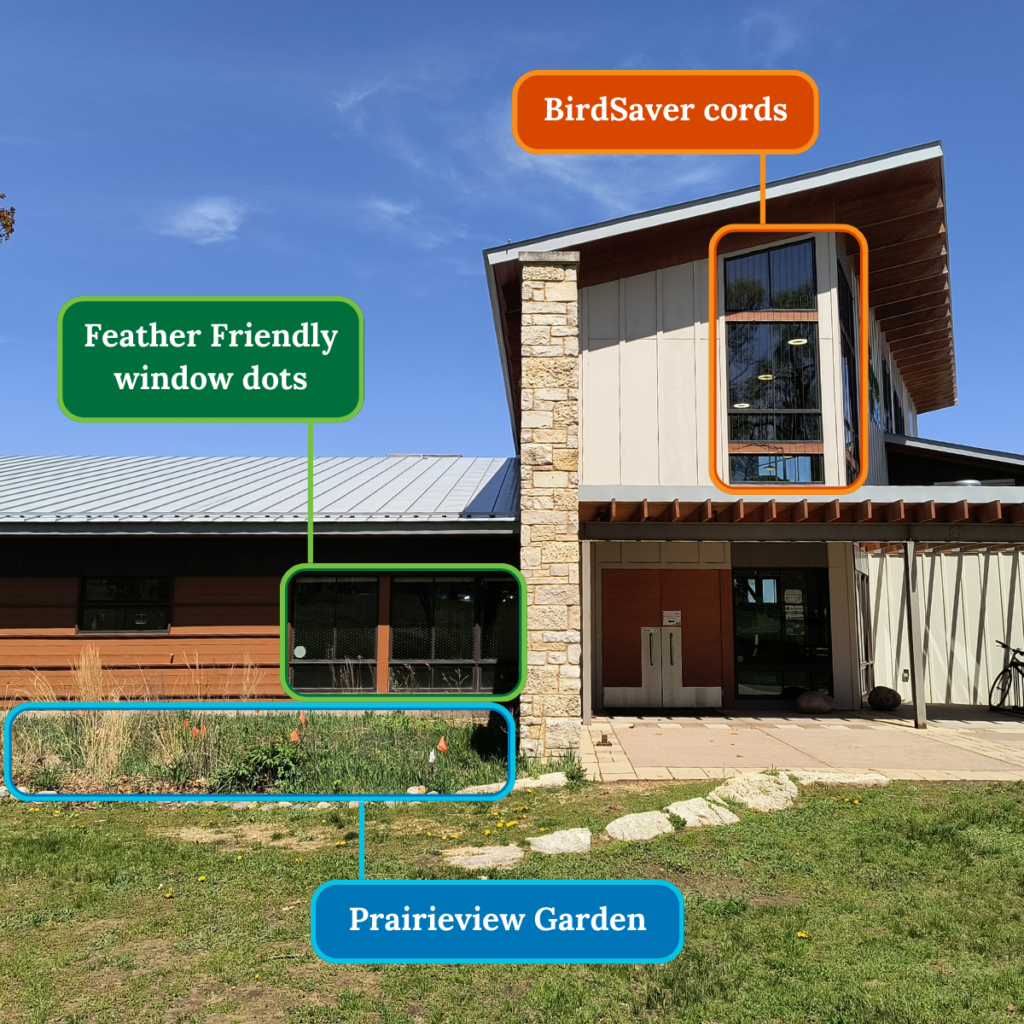By Emma Lather | Environmental Educator
AmeriCorps Member, September 2023 – August 2024
As an undergrad, I got hooked on Pokémon Go. In grad school, I got hooked on birding. The similarities are uncanny; I wander through the tall grass in search of new creatures to capture in my Pokéball (binoculars), record in my Pokédex (life list), and report to Professor Oak (eBird). From the moment I picked up binoculars (figuring someone getting a Master’s doing bird research should probably be able to identify some birds), I was doomed to fall in love. There’s something charming about birds, especially during their Spring migration when the world is coming back to life. March brings early returners like ducks and robins, April has me examining every little brown bird to check for new sparrows, and May produces an explosion of warblers dancing in the leaves.

In Wisconsin, all warblers are members of the family Parulidae (but elsewhere in the world, “what is a warbler” is a much more complicated question). While a few species of these small, often-vibrant songbirds will stick around for the Summer, most pass through for a few weeks as they make their way from their tropical winter homes to their breeding habitats further North. With their active personalities, brief season, and penchant for hiding in leaves, spotting warblers makes a fun spring scavenger hunt.
I saw my first warblers of the season in the marsh behind The Nature Place in mid-April – the usual early Yellow-rumped Warblers and one of my personal favorites, tail-bobbing Palm Warblers. As we come into mid-May, I’m keeping my eyes (and ears) peeled for later-arriving species: Common Yellowthroats, Blue-winged Warblers, Ovenbirds, and Tennessee Warblers, to name only a few of the thirty-ish warbler species we have a chance of spotting in the La Crosse area this month.

However, this fun season for birders represents a harrowing journey for the birds – migration is the most dangerous portion of birds’ annual cycle. All that flying makes birds hungry and tired, forcing them to explore unfamiliar environments in search of food and places to rest. Human-made environments like suburban neighborhoods and farms have replaced native habitats, making high-quality resources harder to find and bringing threats associated with people close to remaining wild spaces. For decades, conservation action in the United States has focused on breeding habitat, but it has become startlingly clear that if we really want to help birds, we need to think outside the nest-box.

So what can we do? What can you do? While protecting wild stopover habitats (where migrating birds rest and refuel) is very important, there are plenty of actions you can take in your own home and yard to lend the birds a wing.
- Keep cats indoors or on a leash. Exhausted migrants make easy targets, and domestic cats kill an estimated 2.4 billion birds in the US every year.
- Plant native and avoid using pesticides. Native plants like viburnum, serviceberry, asters, and goldenrod feed birds with their fruits and seeds and by attracting tasty insects. The Nature Place has seven native gardens!
- Turn off unneeded exterior and interior lights between 11pm and 6am. Did you know that most birds migrate at night? Artificial light attracts and disorients birds, exhausting them and leading them into dangerous urban environments. You can learn more about how you can help and get local migration forecasts or alerts from BirdCast. At The Nature Place, our exterior lights face downwards and we only turn them on when needed!
- Make your windows easier to see. Birds do not see windows – they see reflections of habitat like trees and sky. That’s why up to 1 billion birds die due to window collisions in the US each year. Check out this American Bird Conservancy article for more information about identifying dangerous windows and for ways you can make your windows easier for birds to see. Our Nature Place windows model two attractive options for retro-fitting high-risk windows: BirdSaver cords and Feather Friendly window dots! Our spots are brand new as of November 2023 and were generously funded by Rob and Kathy Tyser.

We at The Nature Place – both the people and the birds – appreciate you doing your part to make migration a little bit safer. And as you walk by this spring, keep an eye out for our feathered friends, the window dots, and me. I’ll be the one with the binoculars!

